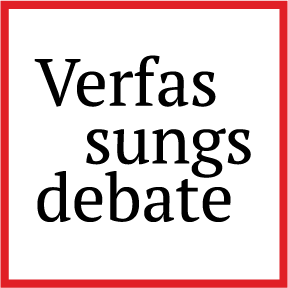(Il-)Legal Gymnastics by Poland and Hungary in EU Border Procedures
This week, Poland has made headlines yet again for dispatching 12,000 guards to the border between Poland and Belarus and the use of tear gas to prevent third country nationals (TCNs), including children, from crossing into Polish territory. This approach is part of a larger policy by the Polish government, whereby domestic legislation was enacted to prevent TCNs from crossing the Polish-Belarusian border into Poland on account of security concerns. Concomitantly, domestic legislation was adopted to facilitate the return of any TCNs found to have crossed the border irregularly, back to Belarus without any assessment of their claims for international protection. By adopting these domestic acts, Poland appears to be following in the footsteps of the Hungarian legislator, which likewise in recent years has enacted and relied on domestic legislation to stretch the limits of EU asylum and migration law.
Recent insights by Dr. Baranowska provide a comprehensive and compelling account of the Polish practice at the Polish-Belarusian border and prompt further comment on the reconcilability of these non-entrée and return measures with EU secondary legislation, particularly considering recent case law by the CJEU (Tompa and FMS) and the ECtHR (Ilias and Ahmed and RR and others v Hungary) on similar measures in Hungary.
Dr. Baranowska explains that an Executive Order of March 2020 prohibiting border crossings in a generalized manner at the borders with Russia, Belarus and Ukraine, was first enacted for the purpose of combatting COVID-19. Exceptions to this entry ban are limited, and international protection seekers do not fall within the scope of these exceptions. This interim measure was then amended in August 2021 to facilitate the automated return of all individuals found to be in violation thereof, at either the border crossing points and/or anywhere else within Polish territory, regardless of requests for international protection. In other words, regardless of where individuals are found in Polish territory and regardless of whether individuals are seeking asylum or subsidiary protection in Poland, they are returned to the border crossing points and pushed out of Polish territory.
In parallel with this amendment to the Executive Order, the Parliamentary Act of 21 October 2021 was drafted and entered into force on October 25th, 2021, which holds that when TCNs are apprehended at the border, they will be immediately and automatically returned and will be subjected to an entry ban ranging between 6 months and 3 years. Under this legislative act, border guards may disregard requests for international protection, unless the individuals can meet a two-fold condition: TCNs must first demonstrate that they are directly fleeing a country where “their life or freedom is threatened with persecution of the risk of serious harm” (1) and must demonstrate that there are reasonable grounds for having entered Poland irregularly (2). Insofar these conditions are not sufficiently met, they are returned to the border crossing points. Crucially, armed Belarusian authorities refuse the readmission of these TCNs. Consequently, the individuals concerned are left in legal limbo in dense forests with no access to basic amenities, while being ping-ponged between security forces of both states. Not only are the lives of the individuals consistently endangered, this has likewise given rise to hallucinogenic situations, evidenced for example by a member of the Polish Parliament who was chased by numerous Polish border guards while attempting to provide basic amenities and supplies to individuals constrained in these forests.
Non-refoulement
EU competence to legislate on borders, asylum and migration is based upon Articles 77, 78, 79 TFEU. Crucially, the principle of non-refoulement principle must be respected across these areas of competence, which is reaffirmed and safeguarded by Article 4 and Article 19(2) of the Charter of Fundamental Rights. The non-refoulement principle under EU law must furthermore be interpreted in accordance with the ECtHR’s interpretation thereof due to the judicial convergence guaranteed by Article 52(3) Charter for corresponding rights in the Charter and the ECHR.
The non-refoulement principle holds firstly that Member States are prohibited from expelling individuals back to third countries (of origin or of return) where the individual risks being subjected to persecution and/or ill-treatment. However, for the realization of this principle to be “practical and effective”, as opposed to “theoretical and illusory” (Hirsi Jamaa, ECtHR, 2012, §175), Member States must not only respect the negative obligation to abstain from sending individuals back to such ill-treatment but are likewise bound by several procedural and substantive positive obligations (MK and others v Poland, ECtHR, 2020, §170-173). These positive obligations demand among others, that an assessment of individual requests for international protection must be made by the expelling authorities, prior to sending individuals back to a third country (of return or origin), which militates against the use of large-scale automated or expedited returns of individuals to Belarus. In MK and others v Poland the ECtHR reaffirms that Member States may enact (domestic) legislation regulating expedited returns of TCNs to third countries in conformity with the non-refoulement principle, but explicitly sets forth (procedural) safeguards that must be in place to ensure the essence of the non-refoulement principle remains respected.
EU law on borders, asylum, and migration
EU legislation on borders, asylum and migration builds on the concept of expedited border procedures and holds in Article 43 of the Asylum Procedures Directive (Procedures Directive) that Member States are entitled to provide for domestic border procedures, which may result in inadmissibility decisions and subsequent expedited returns to safe third countries (Article 33 in juncto Article 38 Procedures Directive). However, such border procedures resulting in expedited returns must occur in accordance with Articles 33 and 38 Procedures Directive to be considered compliant with the non-refoulement principle. These provisions provide the grounds upon which asylum and subsidiary protection requests may be considered inadmissible and condition such decisions inter alia on the respect for (direct and indirect) non-refoulement in the country of return and require that a sufficient connection is established between the country of return and the TCN.
The question of expedited returns in domestic border procedures following inadmissibility decisions was at stake in numerous cases concerning the Röszke transit center saga which unfolded at the Hungarian-Serbian border and gave rise to the Ilias and Ahmed (ECtHR, 2019), the Tompa and FMS judgments (CJEU), as well as the very recent RR and others v Hungary judgment (ECtHR). These cases all concerned the expedited return of TCNs to Serbia, on account of the idea that Serbia was a safe transit country – a Hungarian interpretation of what constitutes a safe third country in line with Article 38 Procedures Directive. One of the central questions at stake in all of these cases, was whether the Hungarian domestic border procedure which resulted in expedited returns of individuals to Serbia on account of the safe transit country designation, fell within the ambit of Articles 33 and 38 Procedures Directive concerning returns to safe third countries, and was thus compliant with the non-refoulement principle. Simply put, could the Hungarian concept of a safe transit country be considered a variation of the safe third country designation?
The ECtHR and CJEU concurred (despite disagreement on the questions concerning detention that were also at stake in these cases) that such expedited returns can only occur insofar the conditions established in ECtHR jurisprudence (see for example MK and others v Poland §168 – 173 and Ilias and Ahmed §151 – 165) and Article 38 Procedures Directive have been respected. The CJEU furthermore reaffirmed that mere transit through a country does not provide for a sufficient link to expel TCNs to that country as required under Article 38 Procedures Directive (Tompa §44 – 47 and FMS §156 – 157). Finally, both Courts affirm that the refusal of readmission in the country of return, is a factor to be considered in the determination of whether the non-refoulement principle has been respected.
Comparing the domestic Polish and Hungarian legislation on border procedures
In both Hungary and Poland, arguments of securitization and health emergencies were relied upon to enact domestic legislation intended to regulate border procedures. While EU law indeed provides for this possibility under Article 43 Procedures Directive, and the ECtHR has interpreted this to be permissible under the non-refoulement principle as long as a number of guarantees are respected, both Member States have disregarded these safeguards, albeit to differing degrees. Indeed, it was already established and reaffirmed in 2019 (Ilias and Ahmed – ECtHR) and 2020 (FMS – CJEU) that border procedures resulting in expedited returns could not be considered a carte blanche to expel individuals back to third countries. Yet the differences in the approaches to border procedures adopted by Hungary and Poland are striking, in that Polish legislation does not even purport to conceal its disrespect of EU asylum and migration law.
The legal construct of a ‘safe transit country’ designation under Hungarian law at least provided the semblance of a domestic border procedure developed in line with Article 43 in juncto Article 33 – 38 APD. The same cannot be said for the Polish Parliamentary Act of 21 October 2021, which followed significantly after the rulings by both courts on the topic of expedited border procedures and the non-refoulement principle in Hungary. Recall in this respect that under the Parliamentary Act, border guards may disregard asylum applications when expelling TCNs back to the Belarusian border, without providing them with the opportunity to lodge a request for international protection (Article 6 Procedures Directive). The one exception under the Parliamentary Act, which would allow protection-seekers to enter Poland, is subject to the two-fold condition that requires individuals to be coming from a place where their life and freedom is at risk (1) and requires the TCNs to provide reasonable grounds for having entered the country irregularly (2). However, the current Polish practice to push back individuals in its territory and at its border to Belarus, appears to presuppose that Belarus is a safe transit country or a safe country of return, and this despite the diametrically opposed findings in MK and others v Poland by the ECtHR, and the findings of the CJEU in Tompa and FMS on the topic of transit countries.
Furthermore, the legal requirement whereby TCNs must demonstrate they had reasonable grounds to enter Poland irregularly, could (and should) be questioned considering the essence of the non-refoulement principle. The requirement to provide reasonable grounds for irregular entry appears to focus excessively on the conduct of the TCNs, which appears to allude to the pronouncement of the ECtHR on individual conduct in border procedures in ND and NT v Spain (§ 200-201; See also: partly dissenting opinion of Judge Koskelo §34- 37). This requirement is furthermore entirely nonsensical in an already expedited procedure where Polish border guards are legislatively permitted to disregard requests for international protection, which form the very foundation for the irregular entry to begin with, as other means to request international protection are currently extremely limited under the Executive Order enacted on account of the COVID-19 pandemic.
While it is problematic that both countries are actively developing measures of non-entrée in violation of the non-refoulement principle, it is acutely problematic that Poland has foregone any semblance of conformity with EU law at all in the adoption of its domestic legislation on border procedures. This is aggravated by the fact that any legal proceedings before domestic and/or regional courts will span over the course of several months at least and will be elongated by enforcement proceedings, and this while individual TCNs remain in legal limbo between two states that refuse to (re-)admit them, without access to basic amenities and with winter around the corner.




This is a very interesting read. However, it seems to me that the analysis omits the ECtHR Spanish case that explicitly authorized a mass expulsion of violent migrants who attacked the border guards, which seems to be the case on the Polish border at the moment.
Second issue that is of a more general nature is the transformation of the EU asylum system into an immigration system, mostly through case law and, therefore, with very weak links to the democratic process. Whereas it should be clear that both the International Law and the EU Law mandate the protection of refugees and asylum seekers, it is clear that the current migration waves have less and less to do with refugees and more to do with economic migrants. According to the statistics from 2019, in the EU and Schengen countries, the recognition rate ranges from 30-40% which indicates an extremely high number of rejected applications (https://www.ecre.org/wp-content/uploads/2020/06/Statistics-Briefing-ECRE.pdf). Of course, this then raises the question of removal from the territory which comes with its own set of problems. Hyper-sensitivity to any border control or refusal of entry (even when someone is coming from a perfectly safe country like Serbia) seems to aggravate the problems in the future because an asylum seeker whose application is rejected (and that is currently the majority) will then be removed from a country he might have spent 2-3 years in waiting for that decision. Also, this incentivizes illegal migration that is both dangerous and expensive, instead of encouraging MSs (who definitely need the workforce) to facilitate the attribution of work visas.
Finally, it is very difficult to argue that covid restrictions are not the reason to forbid entry to the territory. On one hand, even the EU citizens were forbidden from exercising their free movement for a significant period of time and they are still subject to restriction of that movement for the purposes of managing covid crisis. Since it is contrary, under CJEU’s case law to treat the TCNs more favorably than the EU citizens, I find it difficult to argue that TCNs should be granted unconditional entry to the EU territory from a safe third country while the EU citizens maybe can’t even leave their apartments, moreover travel freely to another MS.
Thank you for the comment – always eager to exchange thoughts on these topics! As such, allow me to elaborate on my views somewhat.
In terms of omission of the ND and NT case concerning collective expulsion and the non-refoulement principle, please note that this was mentioned (in the concluding remarks), albeit in a summary manner, precisely because the case was heavily contested on account of the ‘culpable conduct’ criterion that was inserted by the ECtHR. The reliance by the ECtHR on the ‘culpable conduct’ criterion, however, was substantiated on the availability of legal access to international protection procedures, which the applicants did not make use of. Contrary to the suggestion made, the case does not revolve around purported violence used by the applicants towards the border guards as is evidenced from both the case facts (§24 – 31), as well as the submission by the Spanish government (§ 204, 208). Finally, there is a distinct difference between the ND and NT case, where access to international protection proceedings is in fact available, and the current situation at the Polish-Belarusian border, where the highly limited access to international protection proceedings is precisely the legal issue at stake – without this justifying violence of any sort.
On the second point – I would also nuance the observation made. In response to the comment based upon the statistics used by ECRE, the report highlights in response to these percentages that “Low recognition rates do not automatically point to the conclusion that an individual or particular group is not in need of international protection.” (p. 3-4). Likewise, note should be made of the discrepancies in these recognition rates across Member States depending on a myriad of factors and the distinction between the percentages of recognition at first instance and upon appeal where again, an approximated 30% are effectively recognized. As for the competence, I’m not sure I understand the comment concerning the weak links to the democratic process and the transformation of the EU’s asylum system (Article 78 TFEU) into an immigration system (Article 79 TFEU), as the EU shares competence with its Member States in both fields, as well as in the field of border management (Article 77 TFEU).
I would tend to agree that current access to legal pathways for migration as developed under Article 79 TFEU are not sufficiently relied upon or made use of. That does not detract from the fact however (in my view), that under EU law a number of safeguards are in place concerning returns to third countries (including Serbia – with which the EU has a readmission agreement) to ensure compliance with the non-refoulement principle. One does not exclude the other.
Finally, on the point of prohibition of entry on account of COVID-19 and the supposition that there should be unconditional entry – the observations made in the blog do not argue that there should be unconditional entry. The observation made is centered exclusively on the notion of ‘border procedures’ under EU law, and how current Polish practice does not appear to conform with the notion of border procedures embedded in Article 43 Procedures Directive, as clarified by the ECtHR and the CJEU in respective cases (Ilias and Ahmed, Tompa, FMS, RR and others v Hungary). Without delving into the temporal constraints of public health and national security lines of argumentation, the point is not to attack the reinstatement of temporary border controls due to COVID-19, but rather to question the legitimacy of automated returns under EU law more broadly, which in my view, are two separate questions despite seemingly being conflated by certain Member States.
Thank you very much for your reply, it does clarify the initial submission!
I agree that the reliance of the ECtHR on the ‘culpable conduct’ criterion was hinged upon the availability of legal access to international protection procedures. My point was more that there are such procedures in countries such as Serbia or even Belarus which is the party to the ECHR since 2013. So, in a way, the whole system as is functions now seems to be premised upon a thought that no country that isn’t the EU MS (and maybe not even some MSs) is either safe or provides international protection. We are no longer even asking a very fundamental question: what is the purpose of the asylum/protection systems? The purpose is to protect someone whose life is in danger in the closest possible country to the country where their life is threatened, so that they can return when that threat is over. Immigration to Sweden or Germany to live a better life isn’t the purpose of the system. That’s what normal immigration systems should be doing.
On the statistics front, I think that their comment is not supported by the facts they cite themselves and is a bit hypothetical since it presumes that the appeals are successful. If the difference was a few percentage points, that could point to their comment being based, but the difference is more like 30:70, which points to the fact that the majority of the application is not founded. However, I do not think it’s the migrants’ fault their applications are rejected. After all, these people were told by the irresponsible activists and a big portion of the media that it pays off to undertake a life threatening trip and the EU will hand out residence permits at the border crossing. They are the biggest victims of the migration crisis without any doubt. The saddest part is that they could have applied for a working permit (far cheaper than paying 10-20k to the smugglers) and the odds are they would get it as many MSs actually lack workforce.
These systemic dysfunctions are then connected to the judicial intervention in- admittedly- very imperfect Dublin system. My comment on lack of democratic legitimacy was directed to this issue: political reluctance to reform the Dublin system has triggered the CJEU ”creative” interpretation of that system which went way further than what a reasonable parliamentarian would have intended to put into legislation. I’m thinking about case law such as joined cases C‑391/16, C‑77/17 and C‑78/17 where the CJEU decided the EU Law is going to go above the guarantees of the Geneva Convention- alas, imo this is not for the Courts to decide and it fits poorly with their own case law according to which you should try the ”conform interpretation” first:)
In any event, thank you for the interesting and thought provoking discussion, if the general public had more of these types of policy discussions, we probably wouldn’t have had the crisis to begin with.
In this excellently-grounded opinion piece, Dr De Coninck provides a very curious comparison between the Polish and Hungarian cases, arguing that “while it is problematic that both countries are actively developing measures of non-entrée in violation of the non-refoulement principle, it is acutely problematic that Poland has foregone any semblance of conformity with EU law at all in the adoption of its domestic legislation on border procedures”. This sentence raises the important question: should the EU aim to protect Human Rights or merely to defend a “semblance of conformity with EU law”?
Several EU countries have been carrying out violations of Human Rights, generally with impunity and lack of accountability. Here one uncomfortable example for europhiles: on the morning of Feb 6th 2014, close to 200 people from sub-Saharan Africa attempted to swim over to the Spanish enclave of Ceuta from Moroccan territory. They were met with paramilitary Spanish border police, who fired rubber bullets and smoke bombs at them “in warning“. Exhausted and confused swimmers struggled to regain the shore and fifteen people died by drowning in this incident. Fifteen lives lost. Nearly eight years years later, nobody has yet been held accountable, despite Spain’s “semblance of conformity with EU law”. Accountability for the abuses of human rights perpetrated by governments of the EU member states remains a challenge. Not just in Poland or Hungary, but in Spain and, with little doubt, also elsewhere.
The “European values“ and “Rule of Law” that are so often rhetorically eluded to by leaders of EU institutions cannot and should not be taken for granted, but must be exercised and scrutinised everywhere and permanently. Violations must have real consequences. As yet another example of impunity, the European Court of Human Rights in Strasbourg has already ruled TEN times against Spain for not investigating torture or inhuman treatment of prisoners. The current Interior Minister of the Kingdom of Spain, Mr Marlaska, has already accumulated SEVEN sentences against him, for ignoring cases of alleged torture of prisoners during his time as a judge. With what consequences? Mr Marlaska remains Minister in Spain and these rulings have had absolutely no consequence. Moreover, the Spanish state continues to engage in abuses of Human Rights, supported by lawfare in the name of “Rule of Law” particularly against the Basque and Catalan national minorities, whilst maintaining a shaky “semblance of conformity”. Torture of prisoners and death of immigrants caused by border police are abhorrent…and it is a sad, uncomfortable truth that both are being tolerated with impunity by EU member states whilst maintaining “semblance of conformity with EU law”.
“European values“ should be more than just rhetoric and a “semblance of conformity”. All EU member states must hold accountable all those infringing on Human Rights.
https://www.elnacional.cat/en/politics/strasbourg-condemns-spain-torture_575208_102.html
https://www.publico.es/espana/tarajal-cronologia-15-muertes-impunes.html